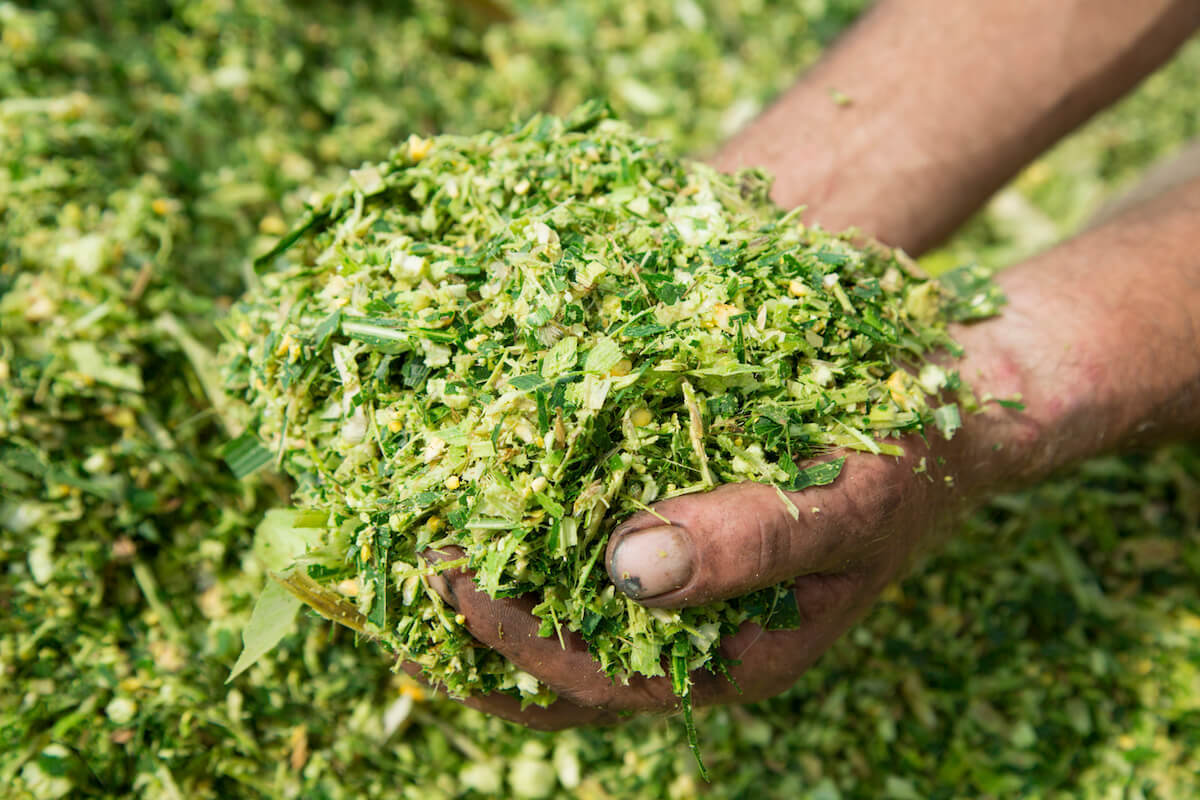When the grass is green and birds are chirping, cattle can roam free and graze the fresh pasture. But what happens when the grazing lands are covered with snow and ice? That’s when silage comes in to help your cattle meet their nutritional needs for good health, well-being, and quality dairy and meat production.
What Is Silage?
Silage is preserved forage like pasture (grass), alfalfa, grains, and corn. It’s a type of cattle feed produced by fermenting plant matter in anaerobic conditions. Silage is like pickled food but for cattle. If well made, cattle love the aroma and taste of silage, which ensures that they consume plenty of nutrients to stay healthy and continue to produce during the dry season and wintertime.
Is Silage Good For Cattle?
If formulated properly and made with a quality ensilage process, silage is an excellent feed addition for cattle. They love the taste, and it provides many of the necessary fiber, protein, carbs, and micronutrients.
However, creating adequate feed for cattle is a complex job that must take into account the cattle’s age, type, health, lactation stage, and your goals. In addition, you must pay particular attention to the nutritional value of the plants used for silage and ensure proper supplementation during various seasons. That’s why Star Blends can work closely with your nutritionist or diary consultant to manufacture unique, personalized cattle feed for your herd’s specific needs or to provide a custom supplement to amplify the quality of your silage.
How to Make Silage For Cattle
We highly recommend working with a nutritionist when making silage for your cattle. First, you’ll have to decide which plants you want to preserve in silage form. You can use grasses or feedstuffs like alfalfa, grains, and corn. In addition, you may need to adjust the plants’ cultivation process to produce high-quality silage. For example, it’s crucial to choose the right hybrid, apply appropriate seeding density, and use the correct amount of fertilizers like nitrogen, phosphorus, and potassium.
Different forages have different rules and best practices regarding seeding, growing, and harvesting. So, if you don’t take appropriate measures for the chosen forage, the produced silage may have insufficient fiber, carbs, or protein content.
Forage Harvesting And Cutting For Silage
It’s vital to cut the forage at a proper height from the ground when harvesting. But, determining how low you can cut depends on the plant type. For example, alfalfa requires a distance of at least 2 inches. Cutting too low or too high can negatively impact the forage quality and lead to soil mixing with it.
Harvesting is usually done when the plant has matured enough to achieve optimal levels of nutrients and moisture. After harvesting the forage, it’s time to cut it into small pieces with a forage chopper. However, it’s sometimes necessary to let the harvested forage dry before cutting for proper moisture content.
Packing And Sealing The Forage
The final step is compressing the finely chopped forage to expel any trapped air before sealing it into a silo, a silage pit, or a silage pile. Many farmers make silage piles nowadays because they are easy to make and seal. Forage should be tightly packed by driving over it with heavy machinery and sealed with plastic lining before you leave it to ferment.
The fermentation process will be completed after about 60-80 days, and you can start feeding silage to your cattle. To properly ferment and prevent yeast and mold growth, ensure the silage is completely sealed and protected from air and moisture.
How Much Silage Per Cow?
Determining how much silage to make per cow is challenging because it depends on the cow’s weight, age, health, environmental conditions, and stage of production (gestating or lactating). In addition, the silage type and quality affect how much silage you may need per cow.
It’s a good idea to formulate a plan with a nutritionist for exact details. But, a good rule of thumb is that gestating cows will consume at minimum about 2% of their body weight daily on a dry matter basis, while lactating cows need more than that.
How Long Can Silage Be Stored?
You can usually store silage for 2–3 years without a significant quality loss. But, if stored with maximum sealing in high-quality silos or pits, you can prolong its lifespan. Remember to uncover only a small part of the silage pile you plan to use in the next 2–3 days to prevent the rest of the pile from going bad. Packing silage in individual bales or bags helps to prevent unintended air exposure and can help you get more life out of your silage.
Trust Star Blends For Custom Cattle Feed
Ready to take your cattle’s nutrition to the next level? Contact Star Blends today and let our experts develop a custom feed solution that meets your cattle’s unique needs. Or, ask about our forage solutions that can help you grow the best silage for your operation.



